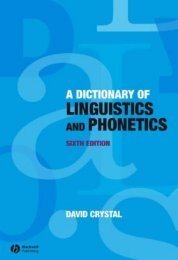url?sa=t&source=web&cd=3&ved=0CC0QFjAC&url=http://www.teachingenglish.org.uk/sites/teacheng/files/B369-Young-Learners-Activity-Book_v10
url?sa=t&source=web&cd=3&ved=0CC0QFjAC&url=http://www.teachingenglish.org.uk/sites/teacheng/files/B369-Young-Learners-Activity-Book_v10
url?sa=t&source=web&cd=3&ved=0CC0QFjAC&url=http://www.teachingenglish.org.uk/sites/teacheng/files/B369-Young-Learners-Activity-Book_v10
Create successful ePaper yourself
Turn your PDF publications into a flip-book with our unique Google optimized e-Paper software.
TeachingEnglish <strong>Young</strong> <strong>Learners</strong> <strong>Activity</strong> <strong>Book</strong><br />
Activities<br />
4. Another volunteer throws the dice. If the<br />
number lands on the same number, the<br />
volunteer must say something about the<br />
animal (for example, ‘it is big’). The teacher<br />
can write this on the board. If the number<br />
is different, the volunteer names a different<br />
animal. The text might look something<br />
like this:<br />
5. The game continues until all the animals<br />
are named and have been described.<br />
The number of sentences you write for<br />
each animal depends on the level of<br />
the children.<br />
6. Once all the texts are on the board, erase<br />
key vocabulary to create a gap fill. Ask for<br />
volunteers to read out the texts and fill<br />
in the gaps.<br />
It is a lion. It is big. It is golden.<br />
It likes sleeping and eating.<br />
It is a ______.<br />
It is _____.<br />
It is ________<br />
It likes _______ and ________.<br />
Alternatives<br />
• This game can be played in groups but you will need more pictures and more dice.<br />
• You could also add animal sounds as these tend to be different in different languages!<br />
• As the descriptions of the animals build up, you can ask the children to read out or remember<br />
all the descriptions given so far before adding another sentence. For example, ‘It is a lion.<br />
It is big. It is golden. It likes sleeping and...’.<br />
• For older children, choose a different category such as pop or music stars.<br />
No resources?<br />
You can write the names of the animals on the board, or you could draw them. You could ask<br />
confident children to come to the front to mime being the animals. You could also ask children<br />
to respond to cues, such as, ‘jump like a monkey’, ‘roar like a lion’, ‘snap like a crocodile’<br />
If you have no dice, you can write numbers 1– 6 on<br />
different pieces of paper, which the children can pull out<br />
of a box when it is their turn to shake the dice and make<br />
a sentence.<br />
© British Council 2012<br />
15





